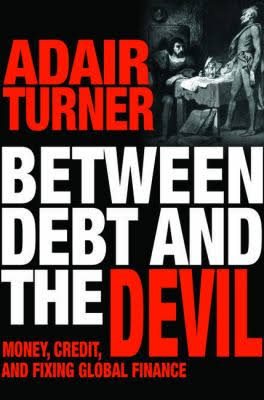By Ann Pettifor
This is a piece Ann Pettifor wrote for the Guardian in response to the S&P threatened downgrade of the Eurozone’s ‘core’ economies:
So European politicians want to shoot the messengers? Sure, ratings agencies haven’t always been reliable, decent or honest. And sure, like Eurozone politicians Standard & Poor is just following events, not shaping them.
But on this occasion S&P’s analysis, if not their solution, is right. Credit Crunch 2.0 is fast accelerating and squeezing life out of the real economy. The global (not just Eurozone) banking system faces insolvency. This private financial crisis impacts disastrously on the real global economy, and incidentally on the Eurozone.
But politicians – in the Eurozone and elsewhere – are not fixing the broken global banking system.
Instead they are leaving it intact, to carry on as before, while relying on central banks like the Federal Reserve and the Bank of England to keep bankers afloat. Last week, in a historically unprecedented move, the US Federal Reserve saved the Eurozone banks from bankruptcy by pumping dollars into private coffers. The Maastricht and other EU treaties prevent the ECB from doing the same. This morning, 6th December, “in light of the continuing exceptional stresses in financial markets” the Bank of England was forced once again, to come to the rescue of City of London-based banks – by pumping more ‘liquidity’ into their coffers.
That’s how very serious this crisis has become.
But Europe’s politicians resolutely refuse to focus remedies for the crisis on the broken banking system. They have been persuaded that the global financial system must not be tinkered with. Financial institutions must be allowed their global status; to roam freely across the globe; to engage in regulatory arbitrage, by e.g. altering the status of their subsidiaries/branches. They must not be taxed and above all, international financial institutions must not be allowed to face the wrath of market forces. Instead Eurozone taxpayers must be made to guarantee all the losses of private banks that lent to EU households, corporates and sovereigns. Yesterday, as Robert Peston noted, the German government dropped its demand that private creditors face losses from loans to sovereigns.
The problem then becomes: where to find the resources for these massive bailouts of the private financial system?
The orthodox, ’monetarist’ and economically deeply flawed answer is: taxpayer-backed ‘savings’. These, it is argued, can only be found by cuts in government spending: ‘austerity’. That is by e.g. gutting government investment in the economy, impoverishing pensioners and making millions of Europeans unemployed.
But as S&P can see as clearly as any little boy in the crowd – ‘austerity’ has no economic cover. Austerity is destroying investment and jobs, and therefore income. Without employment, individuals, households, firms and governments are deprived of money. Without employment income, governments cannot collect taxes, and banks cannot collect debt repayments. So banks face bankruptcy and government deficits rise.
It’s not complicated.
What is the solution? First, the treaties that govern the deeply flawed, privatised monetary system of the EU must be torn up. The ECB must become a central bank that works in the public, not the private interest; that supports the economic policies of democratic governments, and not the interests of private wealth. The EU currency must serve European public interests, including those of Industry and Labour (broadly defined) not just Finance, or private wealth. And banks must be re-structured. Given that many are effectively insolvent, they will no doubt have to be nationalised.
And where will the money come from to create employment? In the first instance from publicly owned central banks. Indeed all money or credit originates with central banks. So, just as the Bank of England today entered numbers into a computer and deposited the sums into the accounts of private banks, so it can provide ‘liquidity’ to finance government investment. And, because interest rates are a social construct, not subject to market forces, the central banks can provide such financing at very low, sustainable rates of interest. These funds will in due course be recovered when employment is created, income generated and taxes paid.
I repeat: it’s not complicated.
But our politicians, like the arrogant king of the fairy tale, prefer to dress up their solutions in the extravagant, if discredited economics of private financial interests.






2 responses
AnnThanks But you say above (article Guardian 6th Dec 2011) “all money or credit originates with central banks.” I thought almost all our circulating currency is created by commercial banks or so Positive Money and the NEF and James Robertson etc say. And the Bank of England tells me that commercial banks create money. Don’t they?
Dick Rodgers Rev Dr
Just watched you on Newsnight Ann, well done! 🙂
(Keep going!)